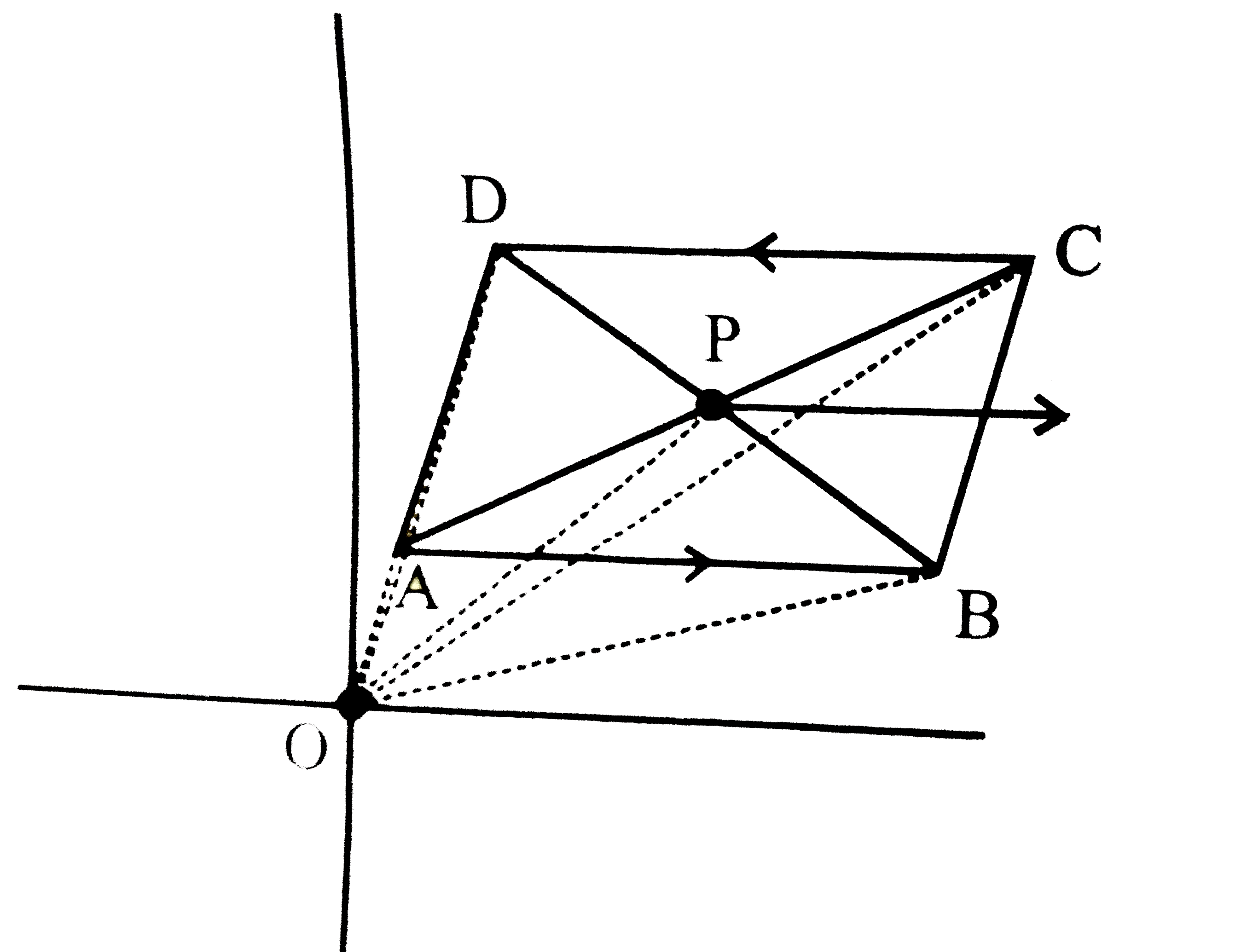ABCD is parallelogram and P is the point of intersection of its diagonals. If O is the origin of reference, show that →OA+→OB+→OC+→OD=4→OP.
4−−→OP
2−−→OP
−−→OP
Null vector
The correct Answer is:A

∵−−→OA=−−→OP−−−→AP,−−→OB=−−→OP+−−→PB,
−−→OC=−−→OP+−−→PC&−−→OD=−−→OP−−−→DP,
Also, −−→AP=−−→PC&−−→DP=−−→PB
∴−−→OA+−−→OB+−−→OC+−−→OD=4−−→OP
Topper's Solved these Questions
Similar Questions
Knowledge Check
If G is the intersection of diagonals of a parallelogram ABCD and O is any point, then O→A+O→B+O→C+−−→OD=
A2−−→OGB4−−→OGC5−−→OGD3−−→OGIf G is the intersection of diagonals of a parallelogram ABCD and O is any point, then O→A+O→B+O→C+−−→OD=
A2−−→OGB4−−→OGC5−−→OGD3−−→OG
ABCD is a quadrilateral and E is the point of intersection of the lines joining the middle points of opposite side. Show that the resultant of −−→OA , −−→OB , −−→OC and −−→OD = 4 −−→OE , where O is any point.
View SolutionIf O is a point in space, ABC is a triangle and D,E,F are the mid-points of the sides BC,CA and AB respectively of the triangle, prove that →OA + →OB+→OC=→OD+→OE+→OF.
View SolutionIf E is the intersection point of diagonals of parallelogram ABCD and −−→OA+−−→OB+−−→OC+−−→OD=x−−→OE where O is origin then x=
View SolutionLet ABCD be a p[arallelogram whose diagonals intersect at P and let O be the origin. Then prove that →OA+→OB+→OC+→OD=4→OP.
View SolutionIn a triangle ΔOAC, if B is the mid point of side AC and −−→OA=→a, −−→OB=→b, then what is −−→OC?
View SolutionGiven a regular hexagon ABCDEF with centre O, show that →OB−→OA=→OC−→OD
View Solution
